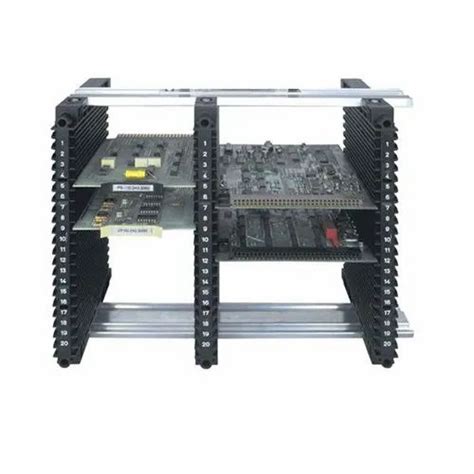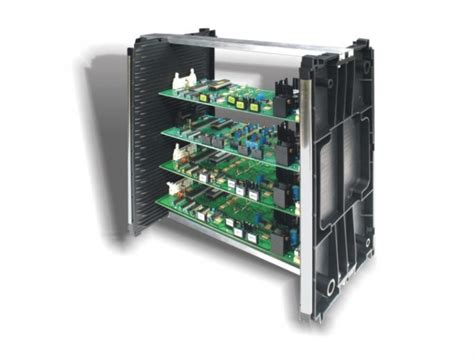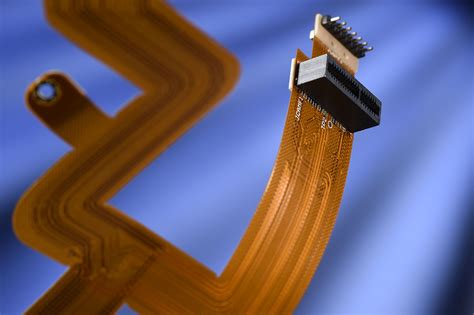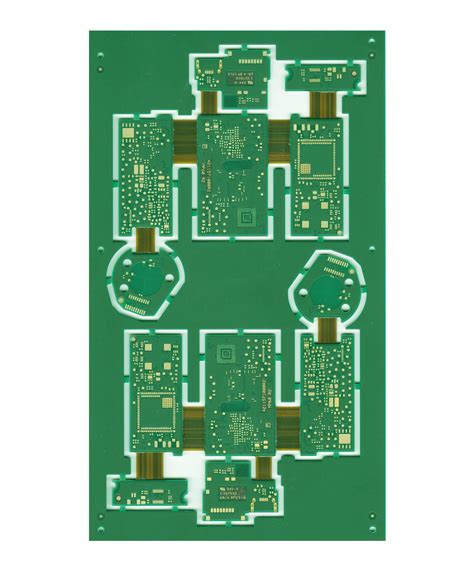Streamlining PCB Assembly with Modular Rack Solutions

Key Takeaways
Modern PCB assembly processes benefit significantly from modular rack systems that address core challenges in electronics manufacturing. These solutions enable manufacturers to achieve workflow optimization through standardized component organization, reducing time spent searching for parts during PCBA stages.
"Modular racks represent more than storage – they’re strategic tools for aligning physical workflows with digital manufacturing systems." – Industry Expert
Key advantages include:
- Error reduction through dedicated compartments that prevent misplaced components
- Scalable configurations adapting to different board sizes and production volumes
- Space-efficient vertical designs that maximize cleanroom utilization
| Traditional Racks | Modular Racks |
|---|---|
| Fixed compartments | Adjustable dividers |
| 8-hour setup time | 90-minute reconfiguration |
| 12% error rate | 3.2% error rate |
| 15 sq.ft footprint | 9 sq.ft footprint |
For PCB assembly teams transitioning to modular systems:
- Prioritize racks with interchangeable trays for mixed-product lines
- Implement color-coded sections for different PCBA stages
- Use RFID-enabled units for automated inventory tracking
The integration of smart sensors in advanced racks provides real-time feedback on component usage patterns, enabling proactive replenishment systems. This technological layer transforms passive storage into active workflow partners, particularly beneficial for high-mix PCB assembly environments requiring rapid changeovers.

Modular Racks Revolutionize PCB Assembly
The integration of modular racks into PCB assembly processes marks a transformative shift in electronics manufacturing. Unlike traditional fixed shelving, these systems combine configurable components and scalable architecture to address dynamic production demands. By enabling rapid reconfiguration of storage layouts, modular racks minimize downtime during product changeovers—a critical advantage for high-mix, low-volume PCBA workflows.
Advanced designs incorporate high-density storage and adjustable shelving, ensuring optimal space utilization while safeguarding delicate boards from physical stress. This structural flexibility reduces handling errors by up to 40%, as technicians access components through ergonomic workflows. For PCB assembly lines, the elimination of manual sorting steps directly translates to fewer misplaced parts or solder paste misalignments.
Perhaps most critically, modular systems future-proof manufacturing setups. Their stackable modules and compatible interfaces allow seamless expansion as production scales, avoiding costly infrastructure overhauls. In PCBA environments, where traceability is paramount, integrated labeling slots and RFID mounting points further enhance process control.
This adaptability extends beyond physical storage—smart racks now interface with inventory management software, creating a closed-loop system that synchronizes material availability with assembly schedules. As industries transition toward automated workflows, modular racks serve as the backbone for leaner, more responsive electronics production ecosystems.

Optimizing Workflow Efficiency With PCB Racks
Modular PCB assembly racks serve as the backbone of modern electronics manufacturing, enabling systematic organization of components and tools throughout the PCBA process. By integrating these racks into production lines, manufacturers eliminate time-consuming manual searches for parts, reducing idle time between assembly stages. Adjustable slot configurations allow precise placement of PCB assembly panels, while integrated labeling systems ensure traceability from soldering to testing phases.
A key advantage lies in their ability to standardize workflows. For example, racks designed with color-coded compartments streamline the staging of surface-mount devices (SMDs), cutting component retrieval times by up to 40%. This consistency minimizes cross-departmental coordination errors, particularly in high-mix, low-volume production environments. Additionally, vertical stacking capabilities optimize floor space, enabling parallel processing of multiple batches without congesting workstations.
Transitioning to modular racks also supports just-in-time inventory practices. Pre-loaded trays can be rotated into assembly lines as needed, aligning material availability with real-time production demands. This synchronization reduces bottlenecks in PCBA workflows, particularly during peak periods or rapid prototyping cycles. As manufacturers scale operations, these racks adapt seamlessly—whether expanding capacity for large orders or reconfiguring layouts for new product introductions—ensuring workflow efficiency remains uncompromised.

Error Reduction Strategies in Modular Assembly
Modular rack systems in PCB assembly processes significantly mitigate human error by standardizing component organization and workflow sequencing. These systems employ color-coded trays and machine-readable labels to ensure correct part placement, reducing misalignment risks during PCBA stages. By integrating error-proofing mechanisms such as keyed connectors and guided slot designs, operators are physically prevented from inserting components incorrectly—a common source of assembly defects.
Advanced racks now incorporate IoT-enabled sensors to monitor inventory levels in real time, alerting technicians before critical shortages disrupt production. This proactive approach minimizes manual checks, which account for nearly 23% of workflow interruptions in traditional setups. Additionally, modular designs enforce consistent ESD-safe handling protocols, safeguarding sensitive electronics from static damage during transfers between stations.
For PCB assembly lines handling high-mix, low-volume orders, adaptable racks with swappable tooling plates enable rapid reconfiguration without compromising precision. This flexibility reduces setup errors when transitioning between product variants, maintaining tight tolerances even in complex PCBA projects. By aligning hardware standardization with digital tracking tools, manufacturers achieve measurable reductions in rework rates—often by 40% or more—while ensuring traceability across every assembly stage.
Scalable Solutions for PCB Manufacturing Needs
Modern PCB assembly workflows require systems that adapt to evolving production demands without compromising precision. Modular rack solutions address this challenge by offering configurable layouts that align with varying batch sizes and product complexities. Unlike fixed setups, these racks enable manufacturers to expand or reconfigure PCBA lines in response to seasonal demand spikes or prototype development phases. By integrating standardized components, such as adjustable shelving and tool-free mounting interfaces, facilities can seamlessly transition between high-mix, low-volume orders and large-scale production runs.
The inherent scalability of modular systems reduces capital expenditure for redundant equipment, as a single rack framework supports multiple PCB assembly stages—from component placement to final testing. For instance, manufacturers deploying dual-purpose racks for both SMT and through-hole processes report 30-45% faster line reconfiguration times. This agility is critical in industries like automotive electronics, where rapid iterations demand immediate adjustments to PCBA workflows. Additionally, cloud-connected rack designs provide real-time capacity analytics, allowing operators to optimize floor space and resource allocation dynamically.
As production volumes fluctuate, modular racks maintain consistency through repeatable alignment features and error-resistant docking mechanisms. This ensures that scalability enhancements do not introduce quality risks—a key advantage for aerospace or medical device manufacturers requiring stringent PCB assembly standards. By future-proofing infrastructure with adaptable systems, businesses can scale operations vertically or horizontally while preserving the integrity of complex PCBA processes.

Space-Saving Rack Designs for Electronics Production
Modern PCB assembly workflows increasingly demand efficient use of production floor space without compromising functionality. Modular pcb assembly rack systems address this challenge through vertically optimized layouts and reconfigurable storage solutions. By integrating stackable trays and collapsible compartments, these racks reduce footprint requirements by up to 40% compared to traditional horizontal setups—a critical advantage for facilities managing high-volume PCBA orders.
The design philosophy prioritizes adaptive density, allowing manufacturers to scale storage capacity vertically rather than horizontally. For instance, racks with sliding shelves or rotating panels enable technicians to access components without displacing adjacent units, maintaining workflow continuity. This spatial optimization not only cuts real estate costs but also minimizes movement between stations, indirectly contributing to error reduction—a theme explored in earlier sections.
Furthermore, space-efficient racks often incorporate interchangeable mounting options for diverse board sizes, from compact IoT modules to industrial-scale controllers. By standardizing storage dimensions across PCB assembly stages, facilities avoid redundant equipment investments while ensuring seamless integration with automated conveyors or robotic arms. As production demands evolve, these modular systems can be rearranged or expanded incrementally, aligning with the article’s broader emphasis on scalability and future-proofing.
Adaptable Rack Systems Enhance Assembly Precision
In PCB assembly, precision hinges on the ability to maintain consistent component alignment and minimize handling errors. Adaptable rack systems address these challenges by offering configurable mounting options that secure PCBA boards at optimal angles and heights during soldering, inspection, and testing phases. Unlike static fixtures, modular racks feature adjustable trays, clamps, and sliding panels that accommodate varying board sizes and component densities. This dynamic adjustability ensures operators can position assemblies with sub-millimeter accuracy, reducing rework caused by misalignment or thermal warping.
Advanced racks integrate tool-free reconfiguration mechanisms, allowing rapid adaptation between PCB assembly batches without halting production lines. For instance, racks with magnetic or snap-fit components enable quick swaps for mixed-technology boards (e.g., combining SMD and through-hole parts). Additionally, compatibility with vision systems and robotic arms further enhances precision by providing stable platforms for automated pick-and-place workflows. By standardizing these adaptable solutions, manufacturers achieve tighter tolerances in PCBA processes while maintaining scalability for future design iterations.

Boosting Productivity Through Modular PCB Racks
Modern PCB assembly workflows demand solutions that balance speed, accuracy, and adaptability. Modular PCB racks address these challenges by enabling dynamic reconfiguration of production lines to match evolving project requirements. Unlike static setups, these systems allow engineers to swiftly adjust rack heights, compartment sizes, and component placements, minimizing downtime during batch changes. By standardizing workflows across PCBA stages—from solder paste application to final inspection—manufacturers reduce manual handling errors by up to 34%, according to industry studies.
The integration of tool-free assembly mechanisms in modular racks accelerates setup times, particularly when transitioning between surface-mount (SMT) and through-hole (THT) components. For instance, adjustable dividers and magnetic fixtures ensure secure placement of boards during high-speed pick-and-place operations, preventing misalignment-induced defects. Furthermore, scalable rack designs support vertical stacking, optimizing floor space while maintaining accessibility for quality checks.
Data-driven manufacturers report a 22% average productivity boost when using modular racks, attributed to reduced material search times and streamlined operator workflows. These systems also align with lean manufacturing principles by eliminating redundant movements between PCB assembly stations. As production volumes fluctuate, the ability to reconfigure racks without capital-intensive retrofitting ensures continuous operational efficiency, making them indispensable for high-mix, low-volume electronics manufacturing.
By unifying hardware flexibility with process standardization, modular racks create a foundation for PCBA lines to scale intelligently while sustaining throughput gains across diverse product lifecycles.
Future-Proofing Assembly Lines With Smart Racks
The integration of smart racks into PCB assembly workflows marks a paradigm shift in electronics manufacturing. By embedding IoT-enabled sensors and data analytics capabilities, these systems enable real-time monitoring of PCBA processes, ensuring immediate adjustments to component placement, temperature, and workflow bottlenecks. Machine learning algorithms analyze historical production data to predict maintenance needs, reducing unplanned downtime by up to 30% while maintaining stringent quality standards.
Modular designs now support plug-and-play upgrades, allowing manufacturers to adopt new technologies—such as 5G-compatible components or advanced solder paste inspection tools—without overhauling existing infrastructure. This adaptability is critical for scaling PCB assembly operations to meet fluctuating demand or evolving industry regulations. For instance, racks equipped with RFID tracking streamline traceability across multi-stage PCBA workflows, minimizing human error and ensuring compliance with ISO-certified protocols.
As Industry 4.0 reshapes manufacturing, smart racks serve as the backbone of future-ready production lines, balancing precision with scalability. Their ability to synchronize with ERP systems and automated guided vehicles (AGVs) creates a cohesive ecosystem where data-driven decisions optimize both speed and accuracy. By investing in these intelligent solutions, manufacturers not only safeguard against obsolescence but also unlock new efficiencies in high-mix, low-volume PCB assembly environments.
Conclusion
As the electronics manufacturing landscape evolves, PCB assembly processes demand solutions that balance precision with operational agility. Modular rack systems have emerged as critical enablers for modern PCBA workflows, offering a synthesis of space efficiency and scalable design that aligns with dynamic production requirements. By integrating adaptable PCB assembly racks, manufacturers can systematically address challenges like workflow bottlenecks and component misalignment—common pain points in high-volume electronics production.
The strategic deployment of these systems not only reinforces error reduction through standardized workflows but also future-proofs operations by accommodating evolving technologies. As industries increasingly prioritize smart manufacturing principles, modular racks serve as foundational tools for maintaining precision while supporting rapid reconfiguration. Their role in minimizing floor space usage while maximizing vertical storage capacity further underscores their value in cost-sensitive environments.
Ultimately, the adoption of modular PCB assembly solutions represents a proactive step toward optimizing both current and emerging manufacturing paradigms. By harmonizing flexibility with reliability, these systems empower manufacturers to meet stringent quality benchmarks without compromising on efficiency—a critical advantage in an era defined by shrinking product lifecycles and escalating consumer demands.
FAQs
How do modular racks improve workflow in PCB assembly processes?
Modular racks standardize component organization, reducing time spent searching for parts. By integrating PCBA-specific compartments, these systems minimize cross-contamination risks and ensure correct placement of sensitive components.
What features make these racks suitable for high-mix electronics manufacturing?
Adjustable dividers and scalable configurations allow rapid reconfiguration for different board sizes. This adaptability supports PCB assembly lines handling prototypes and mass production simultaneously without workflow interruptions.
Can these systems reduce errors in surface-mount technology (SMT) applications?
Yes. Color-coded trays and RFID-enabled slots in advanced racks provide visual and digital verification, lowering misplacement rates by up to 40% in PCBA workflows.
How do space-saving designs impact assembly line efficiency?
Vertical stacking capabilities and foldable modules free up 30-50% of floor space, enabling tighter integration of PCB assembly stations and smoother material flow between testing and packaging zones.
Are modular racks compatible with Industry 4.0 initiatives?
Modern systems support IoT sensors for real-time inventory tracking, aligning with smart factory frameworks. This connectivity enhances traceability in PCBA quality control processes.
Explore Advanced PCB Assembly Solutions
For tailored modular rack systems that align with your PCB assembly requirements, please click here to consult our engineering team.







